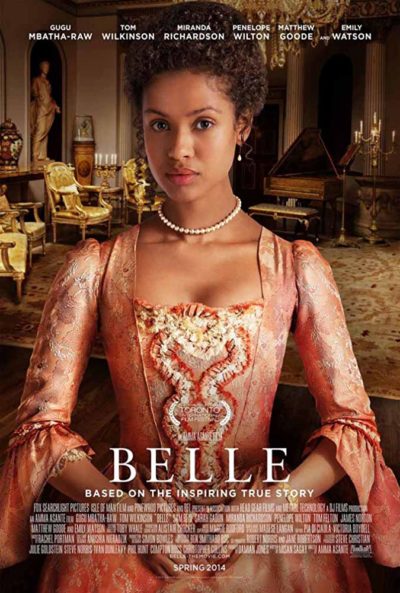
I’m not a massive fan of your typical costume dramas. Stories of simpering young women in uncomfortable frocks trying to snare themselves a suitable husband do not interest me greatly, no matter how dexterous the dialogue penned by Jane Austen or a Bronte is! Belle does fall partly into that trap as two cousins, Dido (aka Belle) and Elizabeth come out in 18th century English society. Those parts of the film, particularly the problems of Elizabeth’s love life, left me cold.
What elevated the film somewhat was the parallel plot involving race and slavery. Belle was a mixed race girl, a result of her white navy captain father falling for a black woman whilst he was on his travels. So, the etiquette surrounding the place in society of a young woman of noble descent but who is also coloured, adds an interesting dimension. More than that, her guardian Lord Mansfield, is the Lord Chief Justice of England who is ruling on a landmark case involving the drowning of slaves on a ship headed to England. The insurance company is refusing to pay out on a claim, and making them do so would strengthen the slave trade, whereas finding in their favour may set the process of abolishing the trade in motion.
Early drafts of the screenplay had the slavery story firmly in the background of the film. The finished version concentrates on the outcome of that case during its climax, though I would have welcomed more of that part of the story in the first two thirds of the film, with a more thorough examination of the issues and complexities.
Having said that, the film should hold your attention throughout. The cast are all fine with the acting honours going to the more seasoned performers such as Tom Wilkinson as Mansfield, Emily Watson as his wife, and Penelope Wilton as the girl’s unmarried Aunt.
Rating 6 out of 10